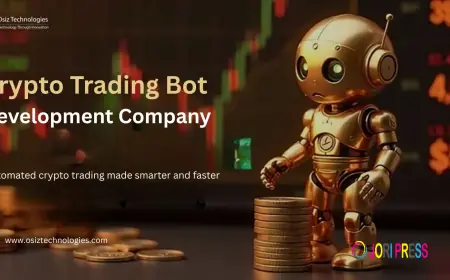Your Guide to Enrolling in a Digital Manufacturing Course in India
The truth is, learning digital manufacturing isn’t just about new tools; it’s about seeing your work differently.

You know that feeling when you stand in a factory and think, This place is changing faster than anyone can keep up? If you work in manufacturing or you’re planning to, you’ve probably sensed it. The shift is everywhere. Old processes are giving way to smart, connected systems that run with the help of data and automation.
It’s not some trend that’ll fade in a year. It’s here for good. And that’s why so many people, engineers, technicians, and even fresh graduates, are thinking about enrolling in a digital manufacturing course in India.
But knowing you need to learn something and picking the right program are two very different things. Maybe you’re worried about choosing a course that doesn’t deliver. Or you’re wondering if it’s too late to switch gears. Whatever’s on your mind, this guide can help you look at your options with more clarity.
What Digital Manufacturing Looks Like in Real Life
Let’s keep this simple. Digital manufacturing means using technology to design, monitor, and improve production. You’ve got sensors tracking performance, machines talking to each other, and dashboards that show you what’s happening minute by minute.
A few months back, I visited a plant in Pune that builds components for electric vehicles. On the surface, it looked like any modern factory, clean floors, robots moving parts from one end to the other. But the real magic was invisible. Data was flowing through the system all day, helping engineers spot problems early and tweak processes without shutting anything down.
That’s what makes it different. It’s not just automation, it’s information driving decisions in real time.
Why Everyone’s Paying Attention Now
Let’s be honest: India’s manufacturing sector has never lacked ambition. But for years, limited budgets and older infrastructure kept some companies from taking the digital leap.
That’s changing fast.
Smaller firms are realizing they can’t compete if they stay manual. And big manufacturers are racing to modernize. If you walk into an interview today and can talk confidently about data integration or smart workflows, you’re already ahead of half the candidates in the room.
A plant supervisor in Chennai told me, “We can buy new machines, sure. But what we need are people who know how to make them work together.” That’s why more folks are hunting for a digital manufacturing course in India that goes beyond surface-level lessons.
What You’ll Actually Learn?
Before you pick a program, you need to know what you’re signing up for. A good course must offer the following courses to the candidates.
- CAD and CAM
- Additive Manufacturing
- Industrial Automation
- IoT in Manufacturing
- Data Analytics
- Cybersecurity
- Supply Chain Tools
Some programs lean heavily on theory, but the better ones give you time in labs and real projects. That’s the part that makes a difference when you start working.
How to choose the most suitable program?
Let’s be real, there are too many courses out there, and not all of them are worth your time or money. So, how do you spot the good ones?
1. Check Who’s Teaching
Look at the faculty profiles. Have they worked in actual manufacturing environments? If everyone on the list has only academic experience, you might want to keep looking.
2. See What Equipment They Have
You can’t learn smart manufacturing from slides alone. A good institute has labs with robots, IoT devices, and up-to-date software.
3. Ask About Industry Partnerships
Do they offer internships or live projects? If the answer’s vague, be cautious.
4. Consider Flexibility
Especially if you’re working already, look for programs that have evening or weekend classes.
I’ve met students who picked a course purely on brand name and later regretted it because there was no hands-on learning. Take your time to ask questions before you commit.
Getting Ready Before You Start
You don’t have to be a tech genius to succeed, but a little preparation never hurts:
- Refresh basic math skills, especially statistics.
- Get familiar with Excel, most courses use it before moving to more complex tools.
- Read a few articles about IoT and smart manufacturing trends.
- Stay curious. That’s probably the most useful habit of all.
What Happens After You Finish
This is the part most people care about: What does this mean for your career?
Depending on your background, you could step into roles like:
- Digital Manufacturing Engineer
- Process Automation Specialist
- Smart Factory Project Lead
- 3D Printing Technician
The demand is real. Companies are investing heavily, and they need people who can help them modernize without losing momentum.
I’ve seen candidates with six months of solid training land interviews that would’ve been out of reach before. One hiring manager told me, “If someone can walk me through how they used data to fix a production problem, I’m interested. Degrees are good, but proof is better.”
Final Thoughts
Maybe you’re thinking this sounds exciting. Maybe you’re also a little nervous. That’s normal. The truth is, learning digital manufacturing isn’t just about new tools; it’s about seeing your work differently. You start to think in terms of data, systems, and connections instead of just machines. And that mindset is powerful. Take your time. Compare programs. Talk to alumni. Then dive in when you feel ready.
What's Your Reaction?
 Like
0
Like
0
 Dislike
0
Dislike
0
 Love
0
Love
0
 Funny
0
Funny
0
 Angry
0
Angry
0
 Sad
0
Sad
0
 Wow
0
Wow
0




















































